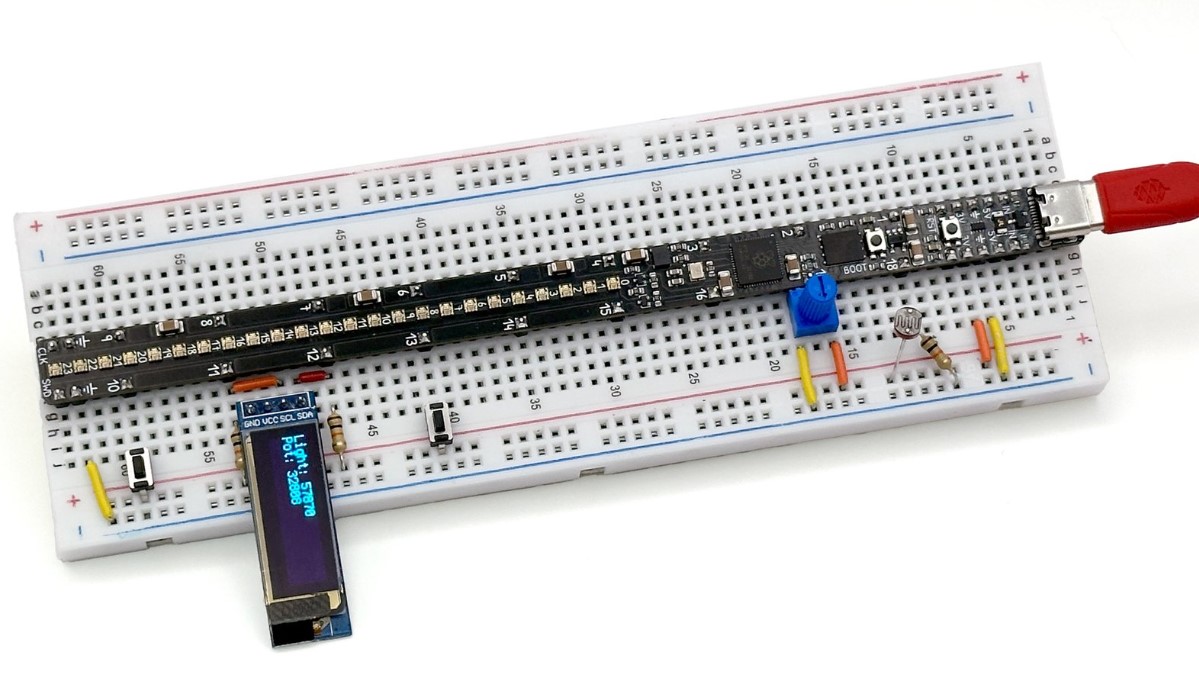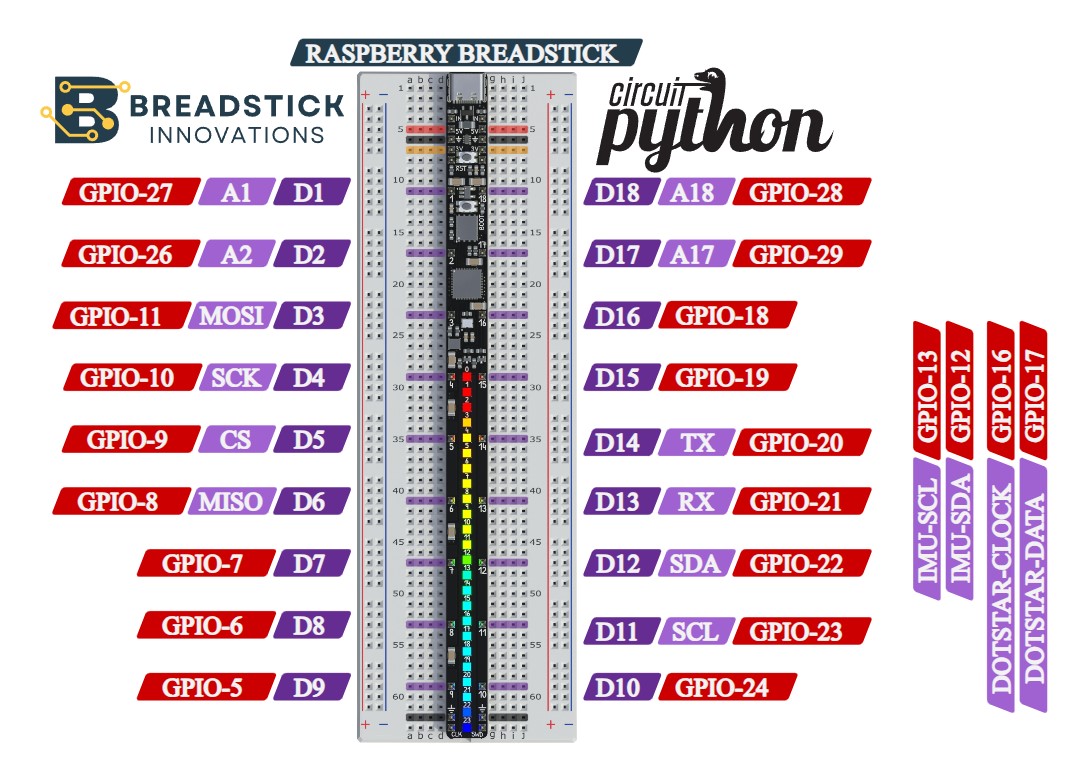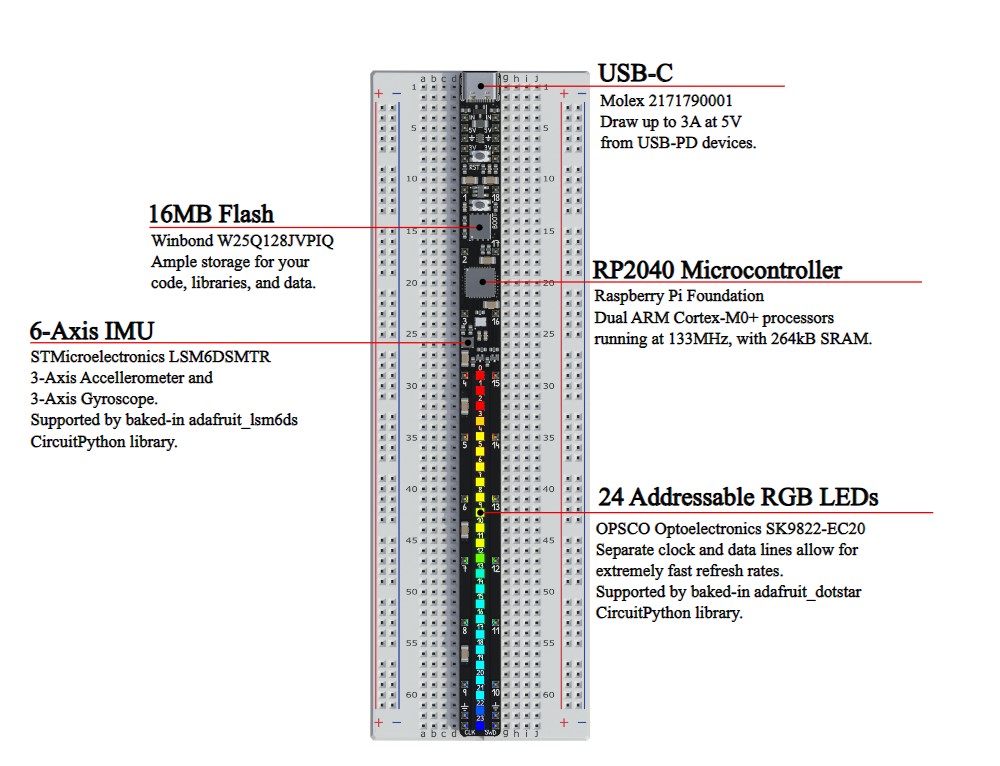Good Raspberry Pi Pico boards are hard to 'crumb' by, but you will soon knead a Raspberry Breadstick
It'll cost you a slice!

The Raspberry Pi Pico's RP2040 SoC has been in many different form factors, many of which made it to our list of best RP2040 boards. But this "breadstick" shaped board takes, the biscuit? Designed by Breadstick Innovations (Cody Jacob and Michael Rangen), the Raspberry Breadstick is a super long board with integrated RGB LEDs, and the project is seeking funding via Crowd Supply, starting from $55 with free US shipping.
Raspberry Breadstick Specifications
| SoC | RP2040 Dual core Arm Cortex M0+ running at 133 MHz |
| RAM | 264KB SRAM |
| Storage | 16MB Flash |
| GPIO | 4 x 12-Bit ADCs |
| Row 4 - Cell 0 | 18 x GPIO Pins rated for 3.3 V |
| Row 5 - Cell 0 | Hardware Serial, I2C, and SPI support |
| Row 6 - Cell 0 | One-Wire and MIDI Support |
| On-board features | Six axis IMU (LSM6DSMTR) with gyroscope and accelerometer |
| Row 8 - Cell 0 | 24 x SK9822 adressable RGB LEDs, DotStar (APA102) compatible |
| Power | USB C PD (5V 3A max via PTC Fuse) |
| Dimensions | 164 x 10 x 5 mm |



The unusual form factor is practical and fun. The practical purpose is that this board can be embedded within a long breadboard, and provide four breadboard holes for your prototyping pleasure. This may sound silly, but sometimes, we just run out of breadboard holes in a project. The fun purpose is a Persistence of Vision (POV) wand. Using the onboard 24 SK9822 RGB LEDs, we can make images appear in thin air. This has been done before; light-painting is the common term, and it can be truly mesmerizing to watch.
The IMU is a fun input device that can be used to measure acceleration forces and gestures. Shake the board and have the LEDs come to life, or embed it into a Harry Potter wand and dish out some wizard justice.
Despite its long length, this board has fewer pins than the Raspberry Pi Pico. There are 18 GPIO pins (26 on a Raspberry Pi Pico) available for users to control. But what pins we do get are the greatest hits. Plenty of digital IO, PWM, I2C, SPI and four analog inputs. Enough for most projects. The pin spacing also means that we can easily and tidily prototype a circuit without cramming a bunch of wires in awkward pin positions.
As this is an RP2040, we can use our choice of programming language. Arduino (C/C++), MicroPython, and CircuitPython are all supported, and the team has a GitHub repository full of example projects and support.
This isn't the first breadstick. There have been three previous models. The first was based on an Arduino Leonardo, and the next, the M4-breadstick, was based on Adafruit's ItsyBitsy M4-Express. The next two, including the latest, use the RP2040 as their brains. All of the boards shared the same full-size breadboard length.
The project's Crowd Supply page is currently at 38% funding ($2,625 of a $7,000 goal) and has until January 18, 2024 to reach its goal. Pledges start from $55 with free postage for U.S. backers. International backers will need to factor in a $12 postage fee.
Get Tom's Hardware's best news and in-depth reviews, straight to your inbox.
Remember that crowdfunding a project does not guarantee receiving a finished product. Backing a crowdfunded project is akin to an investment; you believe in the project and want it to succeed. You are not purchasing a retail product.

Les Pounder is an associate editor at Tom's Hardware. He is a creative technologist and for seven years has created projects to educate and inspire minds both young and old. He has worked with the Raspberry Pi Foundation to write and deliver their teacher training program "Picademy".
